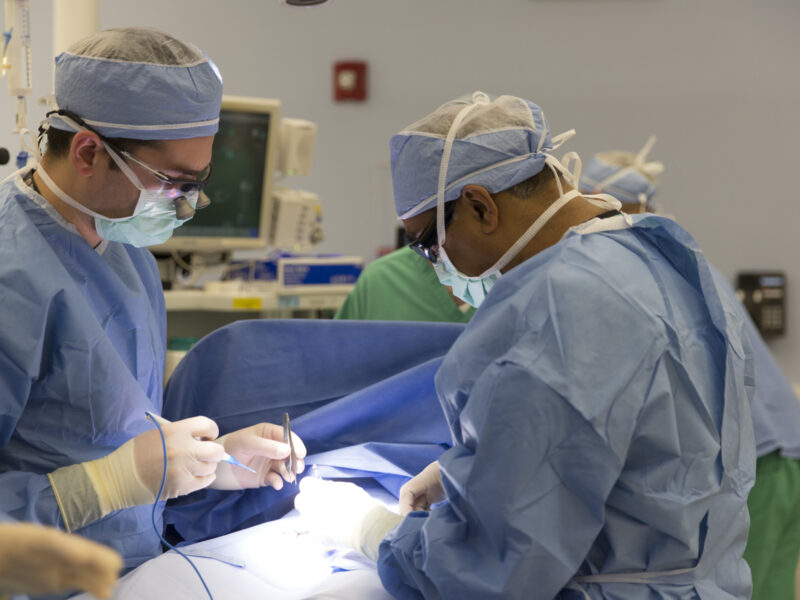Girls’ Perineal Microbiomes Change Over Development, After Urinary Tract Infection
Girls’ Perineal Microbiomes Change Over Development, After Urinary Tract Infection https://pediatricsnationwide.org/wp-content/themes/corpus/images/empty/thumbnail.jpg 150 150 Mary Bates, PhD Mary Bates, PhD https://secure.gravatar.com/avatar/c6233ca2b7754ab7c4c820e14eb518c8?s=96&d=mm&r=g- April 06, 2021
- Mary Bates, PhD
Next-generation sequencing reveals different flora associated with developmental milestones in girls, as well as disruptions in patients with a history of urinary tract infection.
In a new pilot study, researchers from Nationwide Children’s Hospital evaluated the microbiomes of girls at specific developmental timepoints. They found shifts in the perineal microbiome corresponding with important developmental milestones, as well as differences in the perineal microbiome of girls with a history of urinary tract infection.
“From this study, we have a better understanding of the progression of changes in the maturation of the flora at this site,” says co-author Christina Ching, MD, a pediatric urologist at Nationwide Children’s.
“In the future, knowing which bacteria are helpful and harmful at this site could allow us to identify those girls at highest risk for developing an infection.”
The researchers suspected that the perineal microbiome of developing children, particularly girls, is affected by changes related to diet, toileting habits, and hormonal development. Additionally, some girls with recurrent urinary tract infections (UTIs) can undergo repeated courses of antibiotics, potentially disrupting their normal flora. However, there is little to no data on what the normal perineal microbiomes of developing girls should look like and how antibiotics can disrupt them.
Drs. Elizabeth Lucas, Ching, and Sheryl Justice and colleagues sampled the microbiomes of girls at four developmental milestones: 0-3 month-old infants, 4-10 month-old infants transitioning to solid foods, 2-6 year-old toddlers peri-toilet training, and 7-12 year-old premenstrual girls. The researchers collected swabs from the periurethral/perivaginal (PUPV) area, as well as from comparison sites in the mouth and the crease of the ear. They sequenced a small region of the bacterial genome to identify the bacterial species present at each site.
The data showed a clear evolution of the perineal microbiomes with development and also revealed some other informative results. For instance, despite the close anatomic proximity of the perianal and PUPV environments and potential for cross-contamination in infants wearing diapers, these areas possessed unique and distinct flora, even in newborns.
The researchers also found a significant microbial disruption in girls with a history of UTI, particularly in the PUPV area, regardless of their age.
“The girls with a history of UTI displayed flora at the PUPV site that was more similar to other girls with a history of UTI than to girls of their same age group,” says senior author Sheryl Justice, PhD, a principal investigator at the Abigail Wexner Research Institute at Nationwide Children’s.
Whether this shift in microbial composition is the result of their prior infection and/or the antibiotic exposure remains unclear.
“Regardless of the cause, the discovery of these differences between girls who have had UTIs and those who have not is important, as it may be an area to target to help prevent or even treat infection,” says Dr. Justice, who is also an associate professor of pediatrics and urology at The Ohio State University College of Medicine.
“This study is a starting off point,” says co-author Elizabeth Lucas, MD, a physician in complex health care at Nationwide Children’s.
“Ultimately, our big goals would be to predict who is going to be at risk for UTI versus who is likely protected based on their microbiomes,” she says. “With a better understanding of how the perineal microbiomes of healthy girls compare to those with a history of UTI, we might be able to intervene early to modify their flora with probiotics or some other treatment that could prevent UTIs from happening.”
Reference:
Lucas EJ, Ching CB, Saraswat S, Dabdoub SM, Kumar PP, Justice SS. Acquisition, Divergence, and Personalization of the Female Perineal Microbiomes Are Driven by Developmental Milestones and Disrupted by Urinary Tract Infection: A Pilot Study. Front Pediatr. 2020;8:542413. Published 2020 Dec 8. doi:10.3389/fped.2020.542413.
Image credit:
About the author
Mary a freelance science writer and blogger based in Boston. Her favorite topics include biology, psychology, neuroscience, ecology, and animal behavior. She has a BA in Biology-Psychology with a minor in English from Skidmore College in Saratoga Springs, NY, and a PhD from Brown University, where she researched bat echolocation and bullfrog chorusing.
-
Mary Bates, PhDhttps://pediatricsnationwide.org/author/mary-bates-phd/December 27, 2016
-
Mary Bates, PhDhttps://pediatricsnationwide.org/author/mary-bates-phd/
-
Mary Bates, PhDhttps://pediatricsnationwide.org/author/mary-bates-phd/
-
Mary Bates, PhDhttps://pediatricsnationwide.org/author/mary-bates-phd/
- Post Tags:
- Center for Microbial Pathogenesis
- Urology






